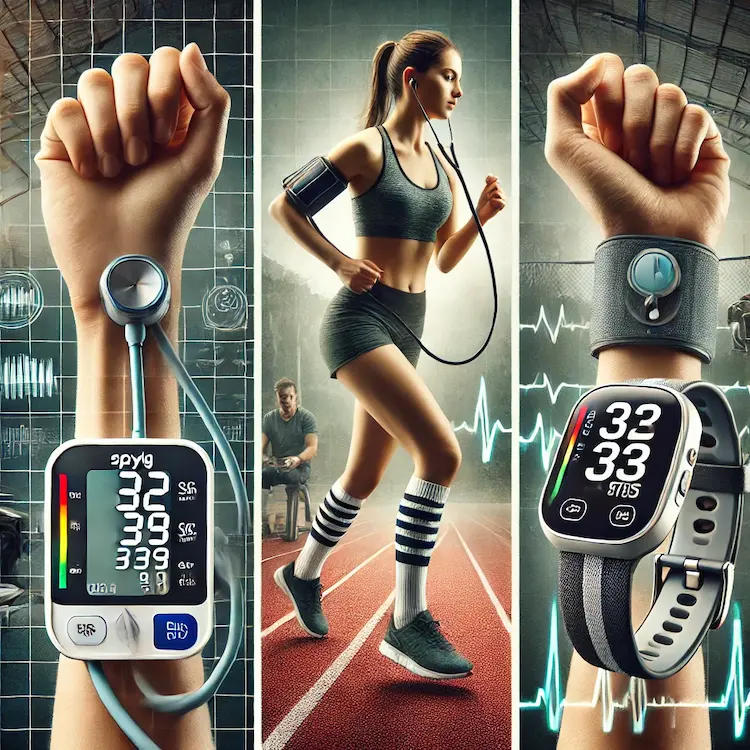Athletes push their bodies to the limit, demanding peak performance and endurance. While training regimens, nutrition, and recovery strategies receive significant attention, one crucial aspect of health often goes overlooked—blood pressure monitoring. Maintaining optimal blood pressure is essential for cardiovascular health, stamina, and overall athletic performance.
Sphyg, a trusted supplier of clinically proven health monitoring tools, provides advanced blood pressure monitors tailored for athletes. These devices help track fluctuations, detect abnormalities, and optimize training strategies. This article delves into the importance of blood pressure monitoring for athletes, its health benefits, potential risks, and the best tools available.
Athletes undergo intense physical exertion, which impacts blood circulation, heart function, and vascular health. Regular monitoring of blood pressure (BP) provides valuable insights into cardiovascular fitness, recovery rates, and potential health risks.

Blood pressure refers to the force of blood pushing against artery walls as the heart pumps. It is measured in millimeters of mercury (mmHg) and consists of:
Athletes typically have lower resting heart rates and more efficient circulation, often resulting in lower blood pressure than the general population. However, extreme training, dehydration, and stress can cause fluctuations or abnormalities that may signal underlying issues.
Monitoring BP is vital for:
Athletes are not immune to hypertension (high BP) or hypotension (low BP). Both conditions can impact performance and long-term health.
| Condition | Causes | Risks for Athletes |
|---|---|---|
| Hypertension (High BP) | Overtraining, poor diet, stress, dehydration | Increased risk of stroke, heart attack, reduced endurance |
| Hypotension (Low BP) | Dehydration, overexertion, poor electrolyte balance | Dizziness, fainting, reduced oxygen delivery to muscles |
Regular BP monitoring allows athletes to adjust their training intensity, hydration strategies, and nutrition accordingly.
Athletes can measure their blood pressure using different methods, each with its advantages and limitations.
These digital monitors, like those provided by Sphyg, use air pressure sensors to measure BP. They are easy to use and provide accurate readings.
Pros: User-friendly
Automated readings
Portable
Cons: Slightly less accurate in individuals with arrhythmia
May require calibration
These are manual sphygmomanometers commonly used by healthcare professionals. They involve using a stethoscope to listen to arterial sounds.
Pros: Highly accurate
Preferred in clinical settings
Cons: Requires skill to operate
Not convenient for daily use
Smartwatches and fitness trackers now include BP monitoring features, using PPG (photoplethysmography) sensors to estimate blood pressure.
Pros: Continuous monitoring
Tracks BP trends over time
Cons: Less accurate than cuff-based monitors
Expensive
| Method | Accuracy | Ease of Use | Best For |
|---|---|---|---|
| Oscillometric Digital Monitors | High | Easy | Home & gym use |
| Auscultatory Monitors | Very High | Requires skill | Medical settings |
| Wearable BP Monitors | Moderate | Very Easy | On-the-go tracking |
Sphyg offers clinically validated digital BP monitors, ideal for athletes seeking precision and ease of use.
To ensure accurate BP readings, athletes should follow these best practices:

Sphyg is dedicated to providing athletes with accurate, reliable, and clinically validated BP monitors. Their devices feature:
Athletes can use Sphyg’s monitors to integrate BP tracking into their training regimen, allowing them to optimize performance while ensuring cardiovascular health.
Blood pressure monitoring is a critical yet often overlooked aspect of an athlete’s health. By tracking BP regularly, athletes can detect abnormalities, prevent health risks, and enhance performance. Sphyg’s BP monitors provide the accuracy and convenience needed to maintain optimal cardiovascular health.
Blood pressure monitoring is essential for optimizing performance and preventing health risks.
Hypertension and hypotension can affect athletes’ endurance, strength, and safety.
Oscillometric BP monitors (like Sphyg’s) offer accuracy and ease of use for athletes.
Best practices for BP monitoring include measuring at rest, using the correct cuff size, and tracking trends over time.
Sphyg provides high-quality BP monitors, helping athletes stay at their peak performance levels.
Invest in a high-quality BP monitor to track blood pressure effectively.
Incorporate BP monitoring into training routines to optimize cardiovascular health.
Consult a healthcare provider if BP readings show abnormal patterns.
Stay hydrated and maintain a balanced diet to regulate blood pressure naturally.
Use wearable BP monitors for continuous tracking and deeper insights into cardiovascular performance.